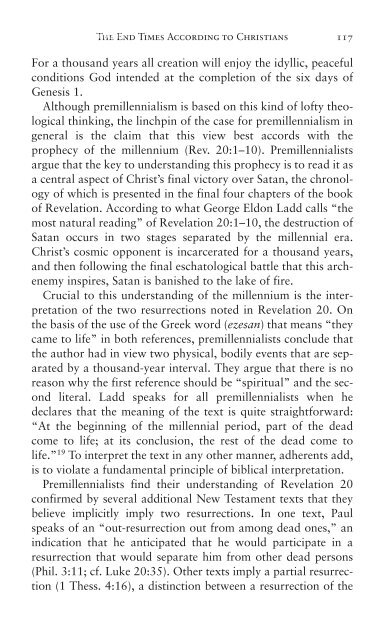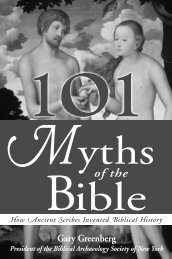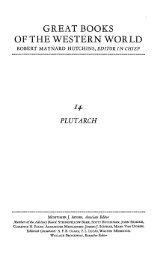Rapture, Revelation, and the End Times - Conscious Evolution TV
Rapture, Revelation, and the End Times - Conscious Evolution TV
Rapture, Revelation, and the End Times - Conscious Evolution TV
You also want an ePaper? Increase the reach of your titles
YUMPU automatically turns print PDFs into web optimized ePapers that Google loves.
obin-bobin The <strong>End</strong> <strong>Times</strong> According to Christians 117For a thous<strong>and</strong> years all creation will enjoy <strong>the</strong> idyllic, peacefulconditions God intended at <strong>the</strong> completion of <strong>the</strong> six days ofGenesis 1.Although premillennialism is based on this kind of lofty <strong>the</strong>ologicalthinking, <strong>the</strong> linchpin of <strong>the</strong> case for premillennialism ingeneral is <strong>the</strong> claim that this view best accords with <strong>the</strong>prophecy of <strong>the</strong> millennium (Rev. 20:1–10). Premillennialistsargue that <strong>the</strong> key to underst<strong>and</strong>ing this prophecy is to read it asa central aspect of Christ’s final victory over Satan, <strong>the</strong> chronologyof which is presented in <strong>the</strong> final four chapters of <strong>the</strong> bookof <strong>Revelation</strong>. According to what George Eldon Ladd calls “<strong>the</strong>most natural reading” of <strong>Revelation</strong> 20:1–10, <strong>the</strong> destruction ofSatan occurs in two stages separated by <strong>the</strong> millennial era.Christ’s cosmic opponent is incarcerated for a thous<strong>and</strong> years,<strong>and</strong> <strong>the</strong>n following <strong>the</strong> final eschatological battle that this archenemyinspires, Satan is banished to <strong>the</strong> lake of fire.Crucial to this underst<strong>and</strong>ing of <strong>the</strong> millennium is <strong>the</strong> interpretationof <strong>the</strong> two resurrections noted in <strong>Revelation</strong> 20. On<strong>the</strong> basis of <strong>the</strong> use of <strong>the</strong> Greek word (ezesan) that means “<strong>the</strong>ycame to life” in both references, premillennialists conclude that<strong>the</strong> author had in view two physical, bodily events that are separatedby a thous<strong>and</strong>-year interval. They argue that <strong>the</strong>re is noreason why <strong>the</strong> first reference should be “spiritual” <strong>and</strong> <strong>the</strong> secondliteral. Ladd speaks for all premillennialists when hedeclares that <strong>the</strong> meaning of <strong>the</strong> text is quite straightforward:“At <strong>the</strong> beginning of <strong>the</strong> millennial period, part of <strong>the</strong> deadcome to life; at its conclusion, <strong>the</strong> rest of <strong>the</strong> dead come tolife.” 19 To interpret <strong>the</strong> text in any o<strong>the</strong>r manner, adherents add,is to violate a fundamental principle of biblical interpretation.Premillennialists find <strong>the</strong>ir underst<strong>and</strong>ing of <strong>Revelation</strong> 20confirmed by several additional New Testament texts that <strong>the</strong>ybelieve implicitly imply two resurrections. In one text, Paulspeaks of an “out-resurrection out from among dead ones,” anindication that he anticipated that he would participate in aresurrection that would separate him from o<strong>the</strong>r dead persons(Phil. 3:11; cf. Luke 20:35). O<strong>the</strong>r texts imply a partial resurrection(1 Thess. 4:16), a distinction between a resurrection of <strong>the</strong>robin-bobin





